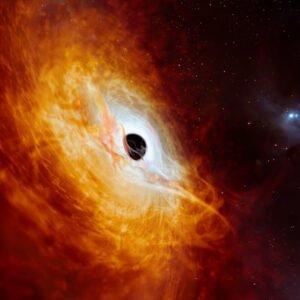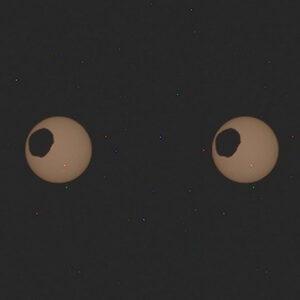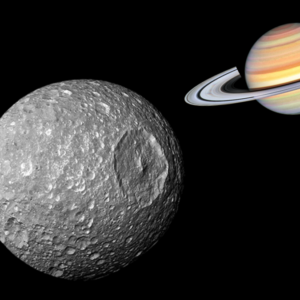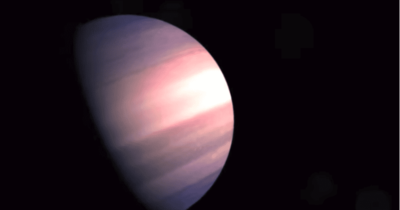
While most high school kids are hoping to at least have fun on their first internship, one 17-year old student at Scarsdale High School in New York was going to uncover something that could be considered way better than just a bit of enjoyment and excitement from a new job. Rather than learn a few new important job skills, earn a bit of extra cash, and have some references to offer on his future CV, Wolf Cukier did the unthinkable and discovered a brand new planet.
Cukier was lucky enough to earn himself a two-month internship during his junior year at none other than National Aeronautics and Space Administration (NASA). Back in 2019, the teenager found himself at the NASA Goddard Space Flight Center in Greenbelt, Maryland over the summer. Considering that he was at NASA, the excitement was expected, but there was probably no way he would have ever believed that he was going to make such an incredible discovery.
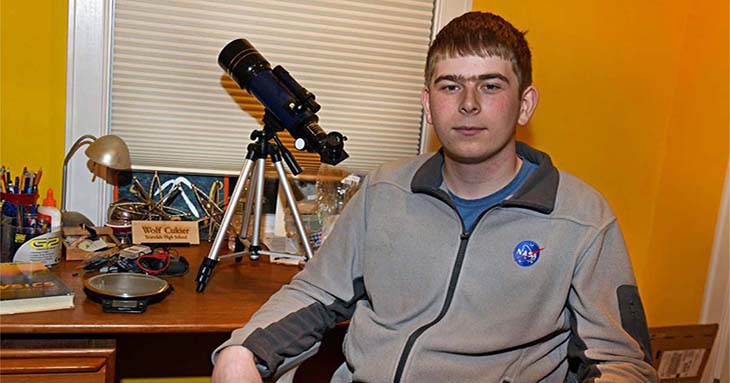
He was given the task of examining data that was collected by TESS, which is short for Transiting Exoplanet Survey Satellite. This machine is an extremely advanced planet-hunting satellite that has been in space since 2018, tasked to search the galaxy for systems that have two stars.
The junior high school student and intern had only been getting used to being in NASA, considering it was just his third day on the job, when something amazing happened. He noticed that there was a ping originating from the data he happened to be going over. His first thought was that the ping was alerting him to an eclipse, but soon enough, he was going to learn that it was nothing close to an eclipse. It was actually an undiscovered planet, and it looked like something out of Star Wars. The planet, which has since been given the name TOI-1338 b, has been compared to Luke Skywalker’s home planet, Tatooine, down to the dual sunsets.
look at this planet that nasa has found… she’s gorgeous! pic.twitter.com/tax0eWeoMD
— Neil Degrease Tyson (@DegreaseNeil) January 24, 2021
As explained by Cukier on NBC News, “I was looking through the data for everything that volunteers had flogged as an eclipsing binary, a system where two stars circle around each other and from our view eclipse each other every orbit.”
“About three days into my internship, I saw a signal from a system called TOI 1338. At first I thought it was a stellar eclipse, but the timing was wrong. It turned out to be a planet.”
A year and a half after Cukier discovered the rare new planet, NASA published an extensive report that shared everything the agency knows about the new planet TOI-1338 b. It explains that the planet was discovered in the Pictor constellation, which is located 1,300 light-years away and that it’s also the only planet in the system that has two stars.
The planet is measured to be 6.9 times larger than the planet Earth, making it bigger than Neptune but slightly smaller than Saturn. Because it is a gas exoplanet that is similar to Neptune as well, it’s most likely that the planet is also inhabitable. Considered a circumbinary planet, it also ‘orbits its two sun-like stars every 95 days.’
The dual-star system of TOI-1338 b has two stars which orbit each other once every 15 days. One of them is said to be at least 10 percent bigger than the Earth’s sun, while the other one is characterized to be ‘cooler, dimmer, and roughly a third of the Sun’s mass.’ Because of this, in this system on star has the ability to block or eclipse the other one from the viewpoint of Earth, which is why Cukier first though that what he was seeing was a stellar eclipse. However, that “glitch” that he first saw was caused by the planet TOI-1338 b’s path as its two stars moved around one another.
TESS, which contains four cameras, studies the same patch of sky at least 27 days at a time while taking pictures every 30 minutes. By doing so, it shows the changes in the stars’ brightness. Then as the planets pass in front of the stars, a movement known as transit, this also helps the astronomers figure out the planets’ locations.
Of course a planet that contains two stars makes it much harder to spot, backed up by the fact that TESS can only ‘spot the transit of the planet passing in front of the larger star.”
According to research scientist at the SETI Institute and Goddard, Veselin Kostov, “These are the types of signals that algorithms really struggle with. The human eye is extremely good at finding patterns in data, especially non-periodic patterns like that we see in transits from these systems.”
Although the discovery of the brand new planet garnered national news, it’s not the first time that NASA has discovered a new planet. TOI-1338 b takes its place on a growing list of planets that orbit two stars that has been found by the TESS satellite since it was first used in the summer of 2018, which is responsible for specifically finding Earth-sized planets that exist in dual-star systems.
The story of TOI-1338 b has gained so much popularity not only due to its discoverer being a 17-year old Junior that was stationed at one of the NASA locations, but because the internet is also quite fascinated by how it looks. Given that the photo that has circulated on the internet is just a rendering by NASA, it doesn’t make it any less lovely to imagine it truly looking like that.
The rendering shows that the planet has ‘a rosy, pinkish hue.’ Meanwhile, another portrayal created by a bot shows a plush, pastel-colored planet which has since captured the attention of the public and other internet users. While the current space observation technology is yet unable to take actual photos of this gorgeous planet, NASA is grateful that the teenager managed to bring the planet to the light.
What are your thoughts? Please comment below and share this news!
True Activist / Report a typo
